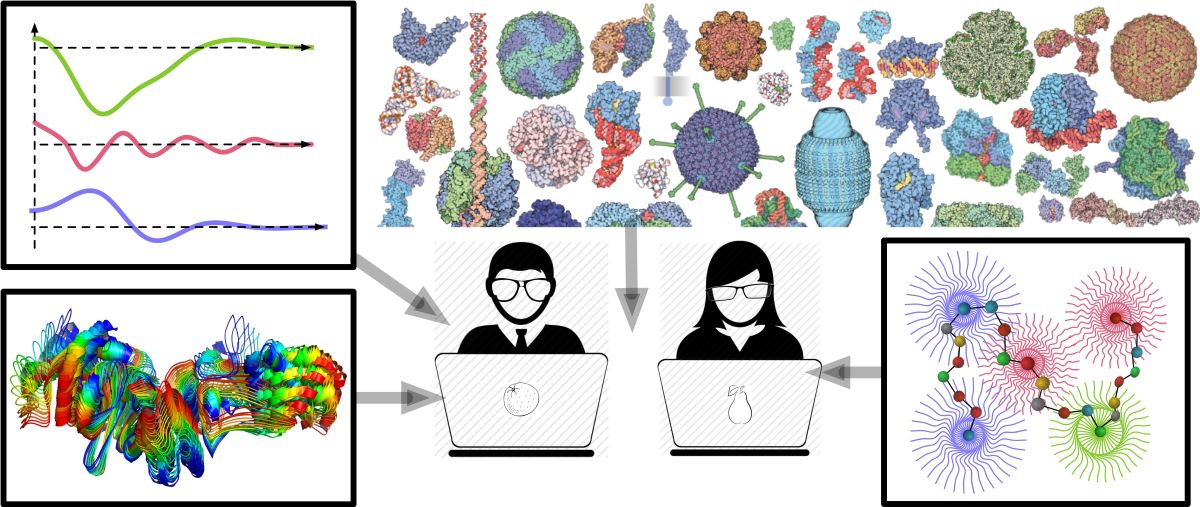Speaker
Description
Given a molecular structure, it can be represented as a set of atomic balls, each ball having a van der Waals radius corresponding to the atom type. A ball can be assigned a region of space that contains all the points that are closer (or equally close) to that ball than to any other. Such a region is called a Voronoi cell and the partitioning of space into Voronoi cells is called Voronoi tessellation or Voronoi diagram. Two adjacent Voronoi cells share a set of points that form a surface called a Voronoi face. A Voronoi face can be viewed as a geometric representation of a contact between two atoms. The Voronoi cells of atomic balls may be constrained inside the boundaries defined by the solvent accessible surface of the same balls. The constrained Voronoi cells and their faces are remarkably versatile structural descriptors of atoms and their interactions. This talk will be focused on some of the protein structural analysis and assessment algorithms that are built upon the aforementioned Voronoi tessellation-derived descriptors. In particular, a novel method for assessing inter-subunit interfaces in protein-protein complexes, VoroIF-GNN, will be presented. Given a multimeric protein 3D structural model, the method derives interface contacts from the Voronoi tessellation of atomic balls, constructs a graph of those contacts, and predicts accuracy of every contact using an attention-based graph neural network. The contact-level predictions are then summarized to produce whole interface-level scores. VoroIF-GNN was blindly tested for its ability to estimate accuracy of protein complexes during CASP15 (15th Community Wide Experiment on the Critical Assessment of Techniques for Protein Structure Prediction) and showed strong performance in selecting the best multimeric model out of many.
| Submitting to: | Integrative Computational Biology workshop |
|---|

